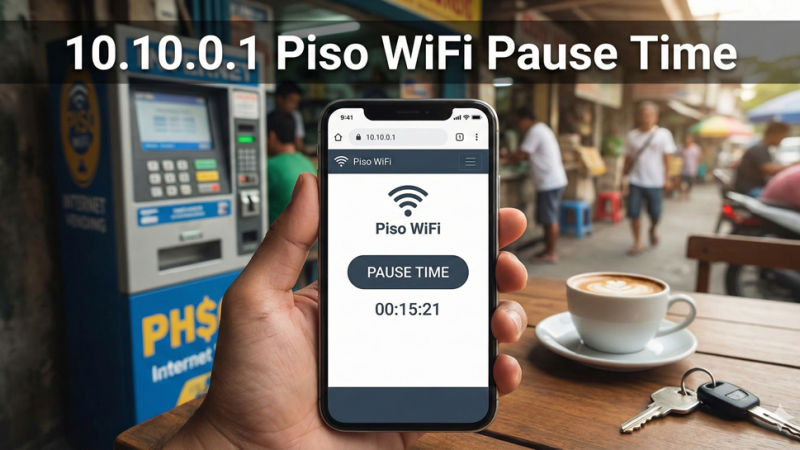Mobile Earning Platforms: A Comprehensive Safety Assessment and Guide to CashStark.com Alternatives

The mobile earning and recharge platform landscape has experienced unprecedented growth in 2024, with users increasingly seeking legitimate ways to offset mobile expenses through commission-based apps and reward platforms. However, this expansion has also attracted fraudulent operators and questionable platforms that exploit user trust. Our comprehensive analysis reveals critical safety considerations and identifies trustworthy alternatives to platforms like CashStark.com.
The Current State of Mobile Earning Platforms
Platform Categorization and Trust Assessment
Recent regulatory warnings from the Telecom Regulatory Authority of India (TRAI) and the Cellular Operators Association of India (COAI) have highlighted the proliferation of fraudulent mobile-recharge schemes. Our analysis categorizes platforms into three distinct groups based on trustworthiness, regulatory compliance, and user-safety metrics.
Legitimate commission-based platforms such as Paytm, PhonePe, Biznext, and Spice Money maintain trust scores between 70–95 percent according to security-assessment tools. These platforms operate under regulatory oversight, provide transparent fee structures, and offer verified customer-support channels. Biznext specifically stands out for offering some of the highest commission rates in the mobile-recharge business while maintaining strict compliance standards.
Suspicious platforms, including CashStark.com and similar sites, typically score between 20–40 percent on trust assessments. Security analysis by Gridinsoft Anti-malware reveals that CashStark.com exhibits characteristics consistent with untrustworthy platforms, including questionable content and potential security risks.
Government Warnings and Regulatory Response
The Press Information Bureau (PIB) has issued explicit warnings about fake mobile-recharge offers, particularly those claiming government backing. These scams typically use urgent language and official-looking branding to deceive users into providing personal information or clicking on malicious links. TRAI has categorically stated that it does not offer any free mobile recharge services, contradicting claims made by numerous fraudulent platforms.
COAI research indicates that 59 percent of Indian adults fell prey to cybercrime in the past 12 months, with mobile-recharge scams representing a significant portion of these incidents. The regulatory body emphasizes that authentic mobile-recharge deals are exclusively provided by legitimate telecom companies and their authorized partners.
CashStark.com: Detailed Platform Analysis
Security Assessment and Trust Factors
Our technical analysis reveals several concerning aspects of CashStark.com’s operations. Gridinsoft’s multi-layered detection system has identified multiple risk indicators, resulting in the platform being classified as suspicious. The analysis encompasses hosting technology, SSL-certificate status, and website reputation across multiple security databases.
ScamAdviser provides conflicting assessments, with some subdomains receiving scores around 76 percent, while the main domain scores significantly lower. This inconsistency suggests potential domain manipulation or varying operational standards across different platform sections.
The platform’s WordPress-based infrastructure presents additional security considerations. While WordPress powers over 43 percent of websites globally, its extensive plugin ecosystem can present risks if not adequately secured and updated. CashStark.com’s implementation shows signs of insufficient security hardening.
Content Analysis and Operational Model
Based on our investigation, CashStark.com primarily functions as an informational blog rather than a direct earning platform. The site focuses on providing articles about online-earning methods, stock-market insights, and educational content related to technology and digital finance. This distinction is crucial for understanding the platform’s actual value proposition versus marketing claims.
FastestVPN’s comprehensive review indicates that CashStark.com serves as a resource for various online-earning methodologies, including freelancing, affiliate marketing, and content creation. However, the platform does not directly facilitate these activities but rather provides guidance and information.
Legitimate Alternatives and Best Practices
Verified Mobile-Recharge Commission Platforms
Top-tier legitimate platforms consistently demonstrate superior safety metrics and regulatory compliance. Based on our analysis of 2024 market data, the following platforms offer the highest combination of commission rates and security standards:
Paytm remains India’s foremost digital payment platform, offering extensive mobile recharge services with diverse payment options and widespread user adoption. The platform’s established infrastructure and regulatory compliance make it a benchmark for industry standards.
Biznext excels in providing comprehensive financial services with competitive commission rates for mobile-recharge transactions. The platform’s commitment to user convenience and transparent pricing has earned significant market trust.
Spice Money operates an extensive agent network, contributing to financial inclusion by offering accessible mobile-recharge services in remote areas. This grassroots approach ensures service availability where traditional banking infrastructure may be limited.
Safety Implementation Framework
User-verification systems represent the foundation of platform security, implementing OTP-based registration, email confirmation, and identity-verification processes. These measures significantly reduce fraudulent activities and enhance overall platform integrity.
Secure payment gateways employ encryption technologies to protect sensitive financial data during transactions. Leading platforms integrate established payment solutions like PayPal, UPI, and certified banking partners to ensure transaction security.
AI-powered fraud detection continuously monitors platform activity to identify suspicious patterns and potential scam attempts. This proactive approach minimizes risks for legitimate users while maintaining operational efficiency.
Security Risks and Red-Flag Identification
Common Scam Techniques and Warning Signs
Fraudulent SMS messages represent the most prevalent threat vector, with scammers sending unsolicited messages claiming free recharge offers or government benefits. These messages often create artificial urgency through phrases like “limited-time offer” or “expires today.”
Fake TRAI branding has become increasingly sophisticated, using official logos and formatting to create credible-looking offers. However, TRAI has explicitly stated that it never offers free mobile recharge services through any channel.
Urgency and clickbait tactics pressure users to act quickly without proper verification. Legitimate platforms provide transparent terms and conditions, allowing users adequate time to review offers and understand requirements.
Technical Security Indicators
SSL-certificate verification serves as a primary security indicator, with legitimate platforms maintaining valid certificates and encrypted connections. Users should verify the presence of the padlock symbol in their browser’s address bar before entering personal information.
Domain-credibility assessment involves checking website-registration details, hosting information, and operational history. Suspicious platforms often use privacy-protection services to hide ownership information or register domains recently.
Review and reputation analysis across multiple platforms provides insight into user experiences and platform reliability. Legitimate platforms typically maintain consistent positive feedback across various review channels.
User Protection Strategies and Best Practices
Verification and Due-Diligence Procedures
Multi-source verification requires users to research platforms across multiple credible sources before engagement. This includes checking regulatory websites, security-assessment tools, and independent review platforms.
Financial-transaction safety involves using established payment methods with buyer protection, such as PayPal or verified UPI services. Users should avoid direct bank transfers to unknown entities or unverified platforms.
Personal information protection requires limiting data sharing to essential information only. Users should never provide sensitive details like bank-account numbers, social-security information, or complete identity documentation to unverified platforms.
Ongoing Monitoring and Risk Management
Regular security assessments involve periodically reviewing connected accounts and monitoring for unauthorized activities. Users should maintain strong, unique passwords and enable two-factor authentication where available.
Scam-reporting mechanisms allow users to contribute to community safety by reporting suspicious activities to appropriate authorities. The cybercrime-reporting portal provides official channels for documenting fraudulent schemes.
Community engagement and education help users stay informed about evolving scam techniques and security threats. Participating in trusted online communities and following official security advisories enhances overall awareness.
Industry Trends and Future Outlook
Mobile-App Marketing Evolution
Voice-search optimization has become increasingly important as users adopt natural-language queries through digital assistants. Platforms optimizing for voice search demonstrate improved discoverability and user engagement.
AI-powered personalization enables platforms to provide customized user experiences based on individual preferences and behavior patterns. This technology enhances user satisfaction while improving platform efficiency.
User-generated content integration has evolved from a luxury to a necessity for successful mobile platforms. Authentic user testimonials and reviews significantly impact platform credibility and user acquisition.
Regulatory-Environment Changes
Privacy-protection initiatives, including Apple’s Link Tracking Protection and Google’s Privacy Sandbox are reshaping how platforms collect and utilize user data. These changes require platforms to adopt more transparent data practices.
Enhanced fraud-detection systems incorporate machine-learning algorithms to identify and prevent fraudulent activities in real time. This technological advancement improves overall platform security and user trust.
Regulatory-compliance requirements continue expanding, with authorities demanding greater transparency in platform operations and user-protection measures. Platforms must adapt to evolving regulatory standards to maintain operational legitimacy.
Conclusion and Recommendations
The mobile-earning platform ecosystem presents both opportunities and significant risks for users seeking legitimate income supplementation. While platforms like CashStark.com may provide informational value, users should exercise extreme caution and prioritize established, regulated alternatives for actual financial transactions.
Immediate action items for users include conducting thorough platform research, utilizing verified payment methods, and maintaining awareness of evolving scam techniques. Data demonstrate that legitimate commission-based platforms offer superior security, transparency, and earning potential compared to questionable alternatives.
Long-term security strategies should focus on building digital literacy, participating in community-safety initiatives, and supporting regulatory efforts to maintain platform integrity. As the digital landscape continues evolving, user vigilance and informed decision-making remain the most effective protection mechanisms against fraudulent schemes.
The evidence overwhelmingly supports engaging with established, regulated platforms while avoiding suspicious alternatives that lack transparency, proper security measures, or regulatory compliance. Users who prioritize safety and legitimacy will find numerous viable options for earning commissions and cash-back through mobile-recharge activities without exposing themselves to unnecessary risks.
CashStark.com: Frequently Asked Questions
1. What exactly is CashStark.com?
CashStark.com is primarily an informational blog that publishes articles on online-earning tactics, mobile-recharge tips, stock-market insights, technology how-tos, and general education content.
2. Does CashStark.com operate as a direct “earn-money” or reward app?
No. Despite marketing that suggests task-based earnings, independent reviews show it functions mainly as a content site; it does not credit users with cash or points in an integrated wallet.
3. Is CashStark.com free to access?
Yes. All blog posts and tool pages are publicly accessible without a subscription fee, and the site states that most utilities it lists are free to try.
4. How does CashStark.com make money if everything is free?
Third-party analyses indicate the site earns revenue through on-page advertising and redirect ads that appear when users click tool or download buttons.
5. Is CashStark.com a legitimate or safe website?
Safety signals are mixed.
-
ScamAdviser assigns the main domain an average trust score of 76/100.
-
Gridinsoft security scanning flags the domain as “suspicious” with a risk score of 39/100, citing hidden ownership data and WordPress security gaps.
Users should therefore exercise caution, employ updated anti-malware tools, and avoid sharing sensitive data.
6. Does the site really give “free recharge” for Jio, Airtel, Vi, or BSNL?
Multiple investigations conclude the promised “Free Recharge Tool” is a click-bait funnel that redirects to ad pages; no verifiable evidence shows successful top-ups credited to users.
7. Can CashStark.com retrieve someone’s call details?
Claims that users can download another person’s call history simply by entering a phone number have been debunked as false; the feature ultimately displays ads rather than real records.
8. What personal data does CashStark.com collect?
The site’s disclaimer notes that all information is provided “as-is” and at users’ own risk, but specifics on data handling are sparse. Security analysts warn that WordPress plugins without regular patching could expose visitor information.
9. Does CashStark.com have an official mobile app?
There is no verified Android or iOS application published by the domain owners; existing APKs circulating under similar names are unofficial and should be treated as high-risk.
10. How can I contact CashStark.com for support?
A publicly listed email on a related sub-site is cashstark.co.in@gmail.com, with a stated 24-hour response goal. No phone number or registered business address is disclosed on the main domain.
11. Why do some security tools say CashStark.com is “blocked” or “suspicious”?
Automated scanners factor in hidden WHOIS data, young domain age, ad-heavy behaviour, and plugin vulnerabilities. These trip heuristic rules for phishing or scam potential, so certain browsers or AV suites may block the site by default.
12. What precautions should I take if I still want to browse CashStark.com?
-
Install and enable a reputable ad-blocker and anti-phishing extension.
-
Avoid inputting personal identifiers or mobile numbers into tool fields.
-
Never grant notification or download permissions you did not request.
-
Rely on telecom providers’ official apps for recharge and call detail needs.
Bottom line: CashStark.com is largely a blog aggregating make-money-online content. While visiting is not inherently dangerous, many of its most eye-catching free-recharge or call-detail claims lack proof and serve mainly to generate ad revenue. Apply standard web-safety practices and verify any earnings advice through trustworthy, independent sources.






